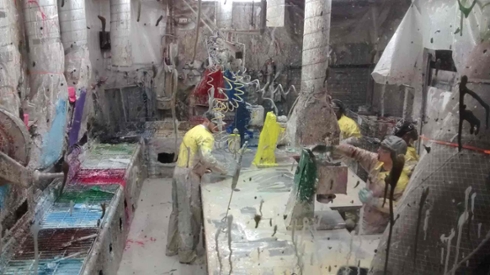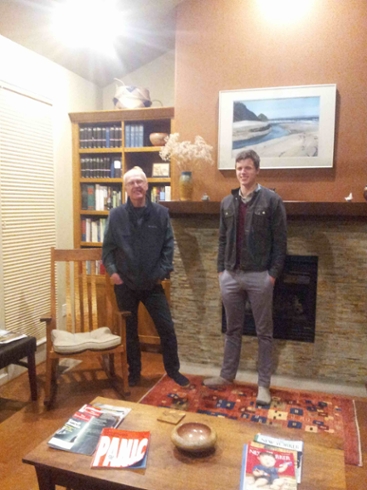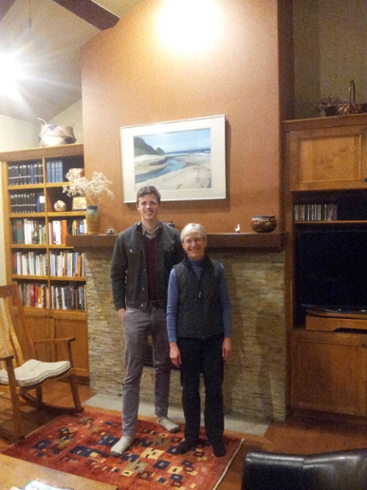Tags
"urban"
Metro Hazardous Waste: Nate Martin, Winter Shadow 2016

Metro is a large municipal agency based in the Portland area, though its influence is defined by a boundary that encompasses multiple cities in several counties. This January, I had the opportunity to spend two information-filled days meeting with and shadowing multiple Reedies who work at Metro.
The first day began at the regional center in Portland where I met my host, Jim. From there we got into a Metro-owned car and drove down to Swan Island to visit the MetroPaint facility. Metro runs a fantastic program there; there's nothing else like it in the country. Jim gave me a thorough tour of the facility, the most exciting part being the processing room. This is a sealed-off room where a small crew (four or five people in jumpsuits and rubber boots) receives and sorts containers of paint that have been collected from throughout the Metro region. The crew quickly opens the containers and inspects them for quality. If they're bad they get dumped into a drain leading to a large plastic tank. If they're good, they get mixed and dumped into one of about a dozen different stations, sorted by approximate color, that drain down to separate collection tanks. It's a messy assembly-line process, and fascinating to watch. The collected paint is further homogenized and adjusted to create standard colors that Metro sells commercially. All of this work, including the packaging, happens in the same facility. I had no idea of the extent or precision of this program before I visited Metro, and I was very impressed by the program’s ability to turn waste back into product.
We left the MetroPaint facility after lunch and drove across the river to visit one of the two Household Hazardous Waste (HHW) collection centers that Metro operates (and that Jim manages). The operation there is efficient and impressive. Customers drive up with a load of waste that can include batteries, CFL bulbs, paint, pesticides, containers of mystery liquids, all kinds of things. A crew there does all the unloading while the driver stays in the vehicle. They quickly load everything onto small roll carts, triaging and sorting as they go. When the driver leaves they pay five bucks for dropping off up to thirty-five pounds of waste.
Continue reading Metro Hazardous Waste: Nate Martin, Winter Shadow 2016
Growth Management Department of Bend, Oregon: Philip Stallworth, Winter Shadow 2016

This past winter I had the opportunity to stay with two retired land use professionals, one a Reedie, and shadowed a number of employees at Bend’s Growth Management Department. Susan Brody, the Reedie, had formerly worked as the Director of Eugene’s Planning and Development Department, and as the Director of Oregon’s Department of Land Conservation and Development. Her husband, Al, is a retired land use attorney who had his own practice. Though they only moved to Bend two years ago, they are both active community members. As members of (different) Technical Advisory Committees, they each work closely with the Growth Management Department and project manager Brian Rankin to help expand Bend’s Urban Growth Boundary.
I applied to this externship because I was interested in a career that used technical skills and analytical thinking to develop impactful public policy. Discussions of Portland’s housing crisis and gentrification problems hinted that planning might be one such career. My experience in Bend unambiguously confirmed that hunch. The people I shadowed were dedicated to crafting the best Bend they (or more accurately, the public) could imagine, while working within the constraints of a municipal department.

